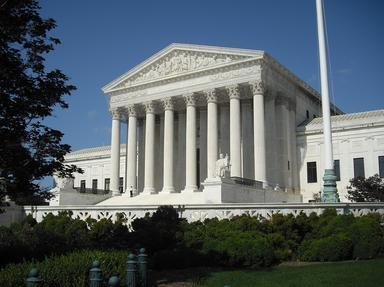Quiz Answer Key and Fun Facts
1. Who was appointed Chief Justice by President George W Bush?
2. Which of the following was appointed Chief Justice by a Democrat?
3. While it is said that he resembled Mark Twain, who is most well known for fully upholding the "separate but equal" decision in Plessy v. Ferguson?
4. Nominated in 1789 by George Washington, he was the first Chief Justice.
5. A defender of States rights and Slavery, who wrote the "Dred Scott Decision?"
6. These two served as Chief Justice for terms of 4 and 21 months respectively.
7. Who was the first Chief Justice to preside over an impeachment of a US President?
8. His nomination was unique, not for any color reason, but because he was a Democrat, who was raised from Associate Justice to Chief Justice by a Republican President.
9. Which Chief Justice is the only person to serve in the highest office in both the Executive and Judicial Branch of the Federal Government?
10. Which Chief Justice's court established the doctrine of Judicial Review with Marbury v. Madison?
11. Who was known as the "Superchief," not as the "Commissioner," and his court ruled against the segregation of schools in Brown v. The Board of Education?
12. He ignored the 14th Amendment and wrote the decision that heavy-handedly struck down the Enforcement Act, allowing groups like the KKK to continue the Jim Crow era in the South.
13. As Chief Justice, who sided with the majority in the still controversial Roe v. Wade case?
14. Before becoming Chief Justice, one was narrowly defeated by Wilson in the 1916 Presidential Election, and the other served as Attorney General, where he appointed J. Edgar Hoover to head the Bureau of Investigation.
15. Who added four Gold Stripes to his robe after being inspired by the Lord Chancellor's costume in Gilbert and Sullivan's Iolanthe?
Source: Author
arsenalvcc
This quiz was reviewed by FunTrivia editor
gtho4 before going online.
Any errors found in FunTrivia content are routinely corrected through our feedback system.

